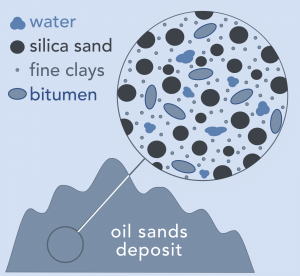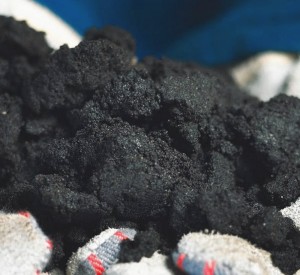Canada has the world’s third largest oil reserves, mostly located in the oil sands. Although oil sands and shale deposits are found all over the world, the Alberta oil sands are water-wet, making bitumen extraction feasible using just hot water. Learn more about this unique deposit, and some of its chemical and physical properties.
Oil sands are a loose sand deposit which contain a very viscous form of petroleum known as bitumen. These unconsolidated sandstone deposits comprise primarily of sand, clay and water saturated with bitumen. Oil sands are sometimes referred to as tar sands or bituminous sands.
The exact composition of Alberta’s oil sands can vary greatly, even within the same geological formation. A typical oil sands deposit contains about 10% bitumen, 5% water and 85% solids. However, the bitumen content can be as high as 20% in some areas.
The solids contained within the oil sands deposit is mostly quartz silica sand (usually over 80%), with a small fraction of potassium feldspar and fine clays. Clay minerals typically consist of kaolinite, illite, chlorite and smectite. Deposits that have a high fines content tend to have a lower bitumen content, and are generally considered to be a lower quality ore. The fines are contained within the water phase of the deposit.
The water content can also vary greatly, from almost zero to as much as 9%. In general, sections with a higher water content also tend to have less bitumen and more fines. Water contained within the oil sands deposit (commonly referred to as connate water) carries with it a number of soluble ions, including sodium, potassium, calcium, chloride and sulphate. Fines tend to be clustered together within the deposit, sometimes referred to as a clay lens.
Conventional wisdom is that the grains of sand are covered with a water layer, although this theory has never been proven. The water, sand, clays and bitumen are intermixed within the oil sands deposit.




